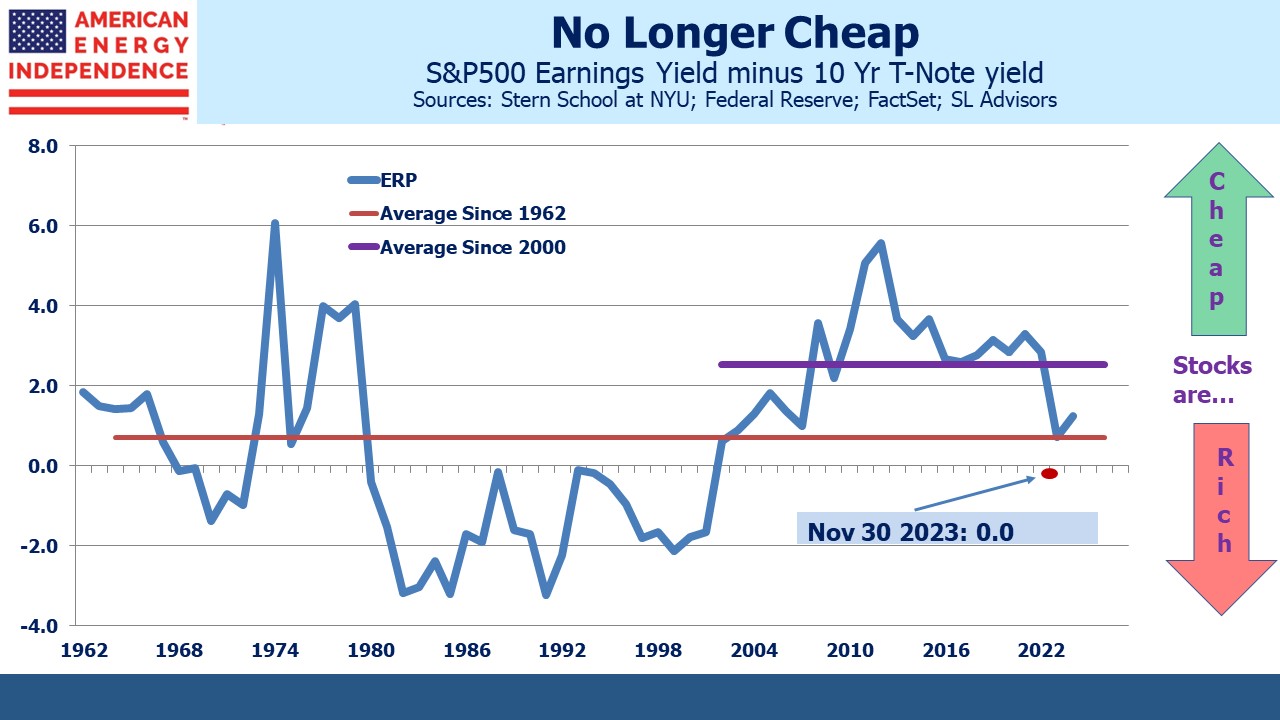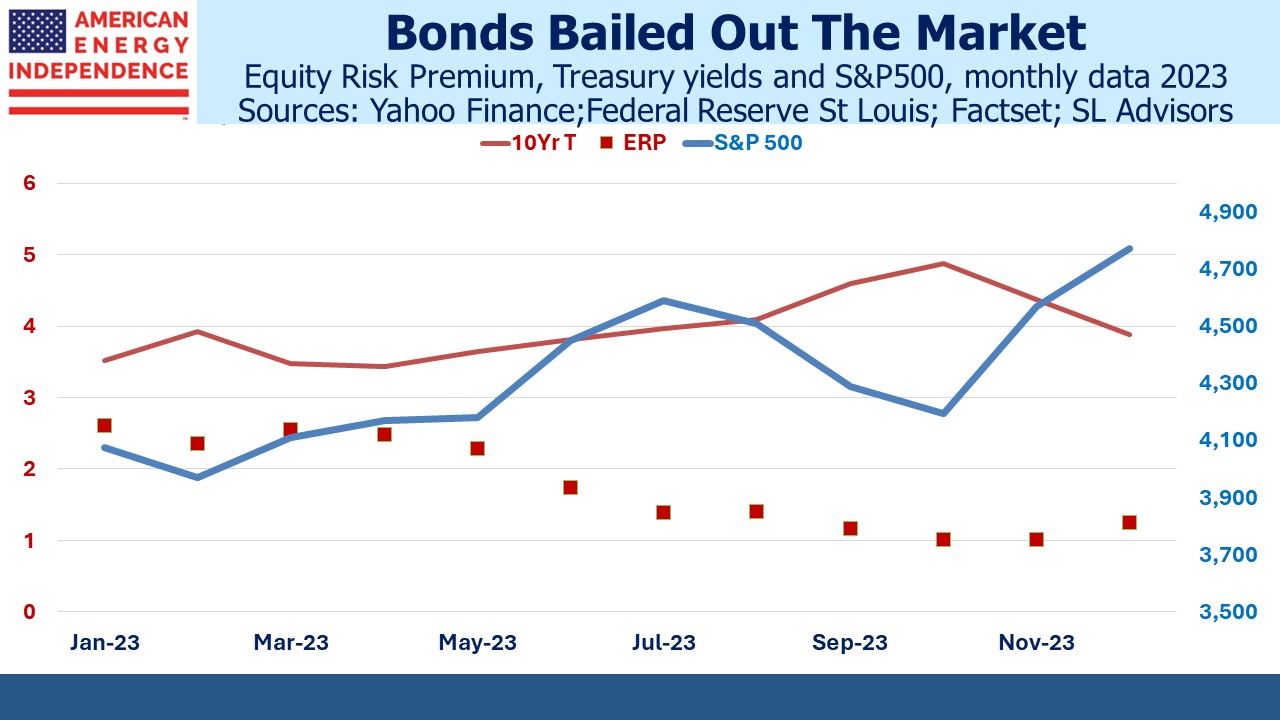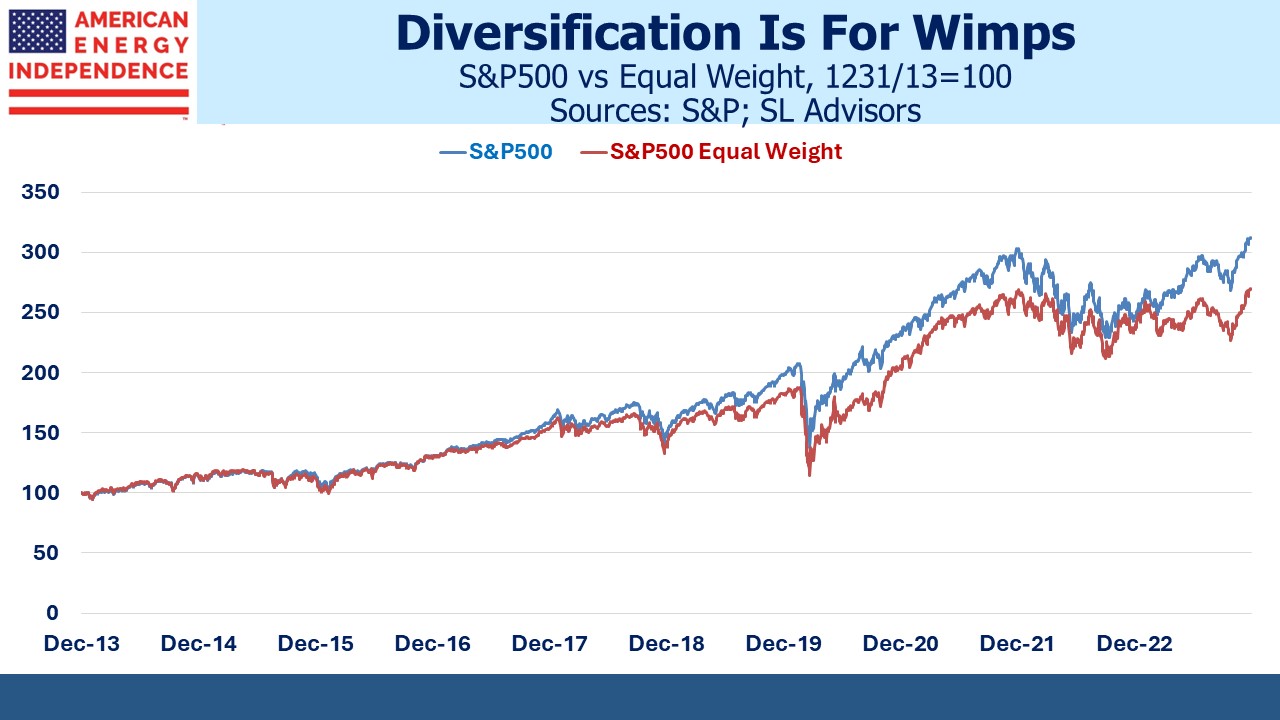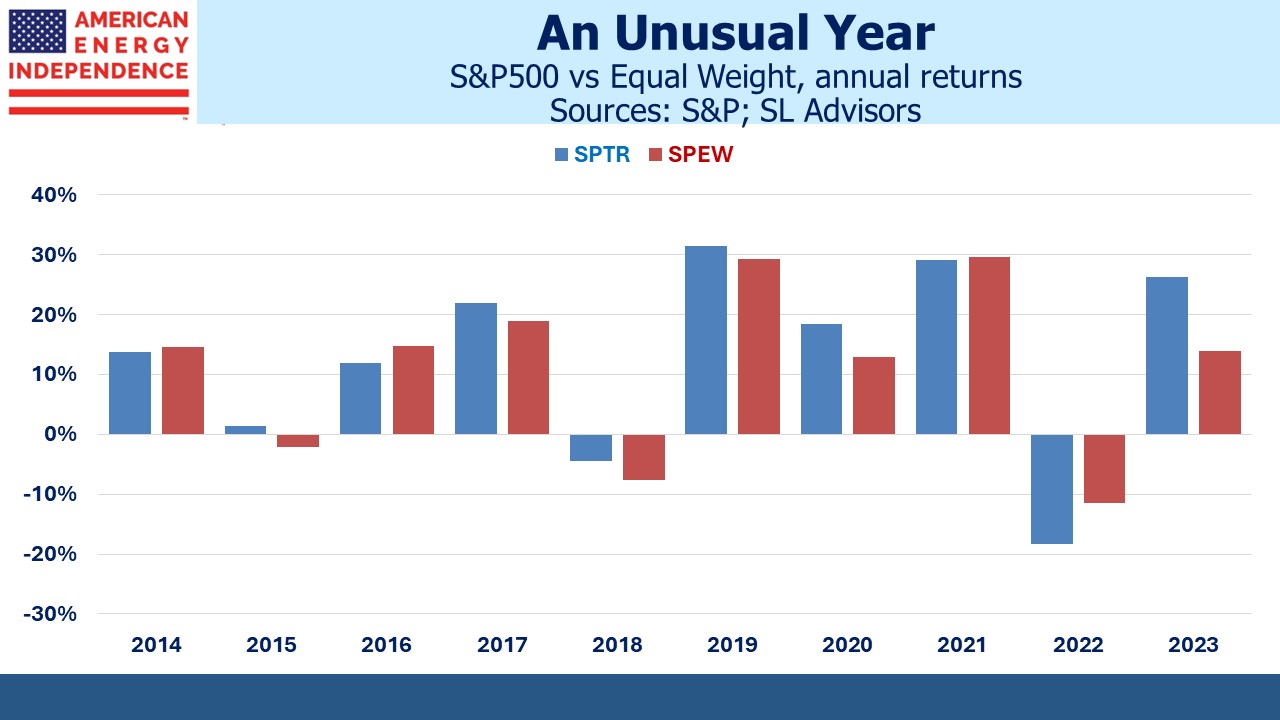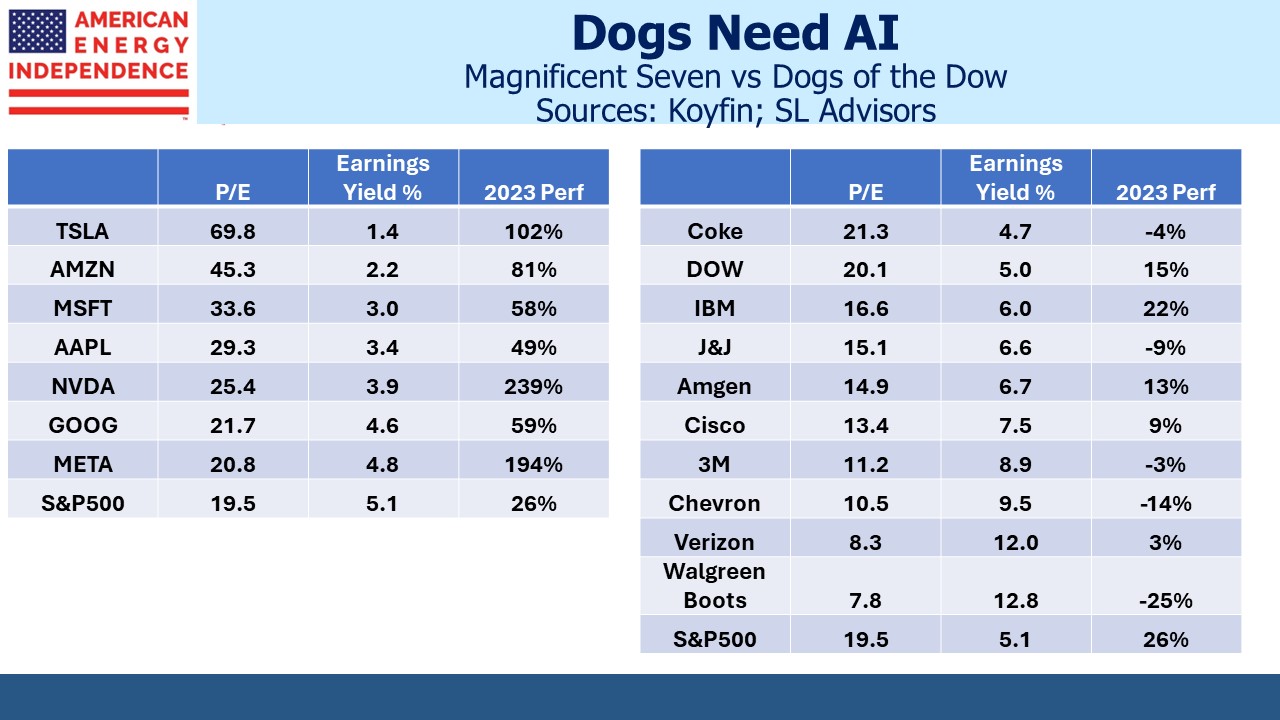Bond Rally Helped Equity Valuations
It can fairly be said that the bond market boosted stocks in the last couple of months of the year. Equities have lost their cheapness in recent years, ever since the Fed belatedly became concerned about inflation. TINA became unfashionable as interest rates returned to unfamiliar, reasonable levels.
Compared with bonds, stocks are as expensive as they’ve been for at least two decades. October was the worst point of the year for relative valuation. The Equity Risk Premium (ERP), defined here as the yield spread between S&P500 earnings and the ten year treasury, touched 1.0 as long term rates briefly reached 5%. The subsequent bond rally was helped in December by the FOMC’s Summary of Economic Projections (SEP) indicating rate cuts in 2024. The fall move in bond yields was so strong that the relative pricing of stocks still isn’t as poor as it was two months ago, even after an almost 16% rise in the S&P500.
The problem with considering the market’s ERP is that performance has been dominated by the “Magnificent Seven”*. Five of them sport an earnings yield nowhere close to the market. Tesla in particular looks ruinously priced. This blog maintains a spirited dialogue with fervently happy Tesla owners (watch EVs are NOT cheap) whenever we fail to embrace the charms of waiting 20-30 minutes to recharge.
Uber leases Teslas to some of their drivers, and I’ve only heard one complain about having to stop at a charging station in the middle of each workday. Elon Musk has built a devoted following, and a short trip to penury awaits those who short Tesla. The last short squeeze ended in 2020 when Tesla finally took pity on the shorts, providing more supply with a secondary offering following a tripling in price. It spent most of last year near the top of most shorted names. Bernstein is recommending a short sale. but I think Tesla’s best avoided from both sides.
The domination by the Magnificent Seven is evident in the contrasting results of the S&P500 with its equal weight cousin. From 2013-2022, the annual returns of the market cap weighted version beat equal weight by an average of 0.7%. Last year was 12.4%. It was less about stock picking than how much AI you had in your portfolio.
The “Dogs of the Dow”, popularly defined at the ten stocks in the DJIA with the highest dividend yield, all lagged the S&P500 last year. Historically, their purchase has rewarded investors over the following year.
It does seem to be a moment of extreme valuations. Without the Magnificent Seven, the ERP would be closer to its long term average.
After examining the market from these various angles, 5.25% three month treasury bills seem pretty reasonable. The market is telling you the yield won’t last, but you never know. Jay Powell downplayed the inference from the December SEP that they’ll be cutting rates in the first half of this year. If you’re ambivalent on adding to equity exposure, even if rates fall this year and rolling over treasury bills averages, say, 4.5%, that hardly looks like a disaster.
Energy infrastructure continues to offer compelling cash returns. Enbridge (ENB) yields 7.6% and has increased its payout for 29 straight years. It still looks a compelling pairs trade versus a short SPY (noted in Fiscal Policy Moves Center Stage in early October). And January should see seasonal buying pressure in MLPs (see The MLP Yuletide Spirit). AMLP is the simplest way to play that – although this deeply flawed ETF is regularly criticized on this blog, it does have its uses as a short-term trading vehicle.
On December 26, also known as Boxing Day to Brits (email me if you want to know more), the Vogtle nuclear power plant in Georgia finally began commercial operations. It’s the first new nuclear reactor in the US since the Tennessee Valley Authority’s Watts Bar 2 was commissioned in 2016. France relies heavily on nuclear for power, and China is leading the world in new construction, as for many things. Spain confirmed they’re phasing out nuclear power by 2035.
It’s not credible to be concerned about global warming but also be anti-nuclear, the world’s safest form of power generation. If your only solution is to run everything on weather-dependent solar and wind, you’re promoting an enormous leap backwards for humanity rather than trying to solve the problem.
*Amazon, Apple, Google, Meta, Microsoft, Nvidia and Tesla
We have three have funds that seek to profit from this environment:
